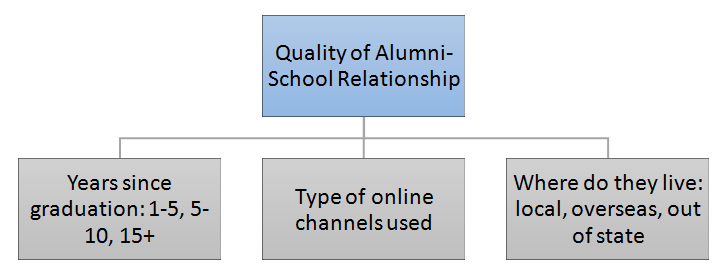
An Engagement Strategies Group survey found that eight out of ten alumni refused to donate to their alma mater because they felt the college had not done enough to connect with them following graduation. Furthermore, they felt they’d paid enough in tuition and that the school didn’t deserve their ongoing support. Ouch. At home and around the world, alumni represent the success of your programs. A well-nourished alumni network can provide links to industry, potential new leads, mentorship to current students, and of course financial support for your school. But none of this happens without effectively connecting and re-connecting with graduates. How can busy alumni coordinators make that happen?
Establish An Alumni Engagement Model
Developing a solid framework for engaging with alumni is an essential starting point for generating meaningful relationships with your school’s graduates. A well thought-out strategy provides structure, guides tactics, and facilitates effective measurement – which is crucial for gauging success and planning improvements. Networking guru, Beth Kanter suggests a preliminary model that looks something like this:

Segmentation And Alumni Personas
Just like a recruitment target audience, your school’s alumni will naturally fall into several persona categories. Part of determining the “Quality of Alumni-School Relationship” is segmenting graduates in groups, and considering a range of factors that will determine how you go about connecting with them:


Crowdsourcing Content From Your Expert Alumni
Higher Ed Live asserts that for most alumni, attending a live event and contributing content to a school blog or website takes an equivalent level of commitment. And considering that the number of Americans relocating for work jumped 35 percent last year, crowdsourcing content from graduates may be your school’s best bet for engaging alumni who have moved out of state or overseas. Engagement experts Keith Hanon and John Arboleda confirm that increasing graduate mobility makes reaching international alumni more important than ever.
With a commitment of say, an hour a month, your college could ask alumni to contribute an update on “where they are now” in their careers – or how they believe their time at your college shaped them personally and professionally. Consider also video content or podcast interviews with alumni. Dedicate some digital space to alumni willing to mentor current students online, answering questions about industry, and guiding their entry into the professional sphere.
Not only is crowdsourcing a savvy content strategy for schools looking to strengthen alumni connections, it’s also a flexible Nurturing Strategy (from our original Engagement Model) that accomplishes a number of important objectives:

So before sending out a generic request for financial support or invites to the perennial networking cocktail, consider the foundational nurturing steps your school may have missed. Have you connected with alumni meaningfully enough to avoid the donation “cold shoulder?”
What engagement model does your school use to generate committed and generous alumni?






